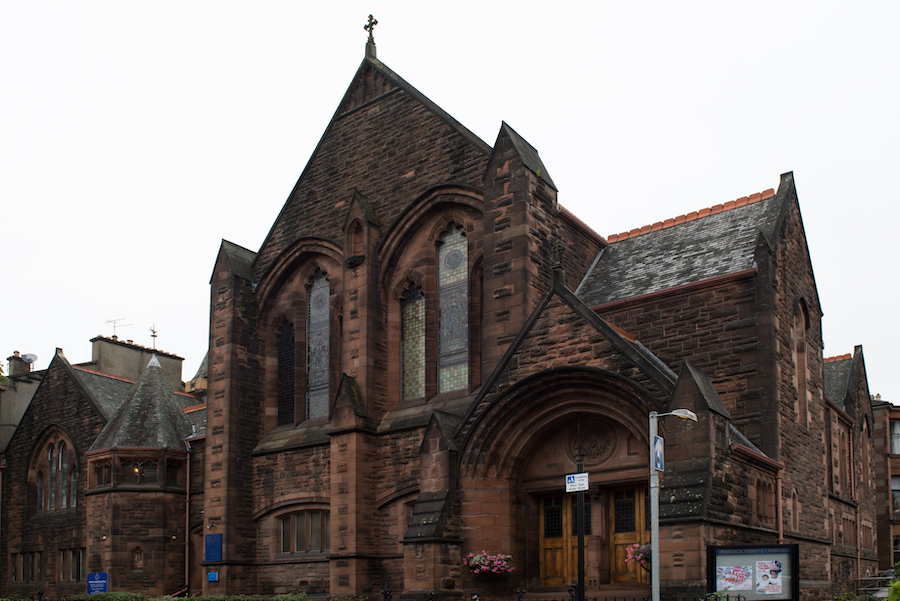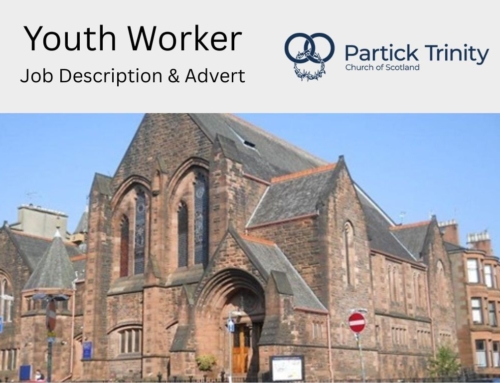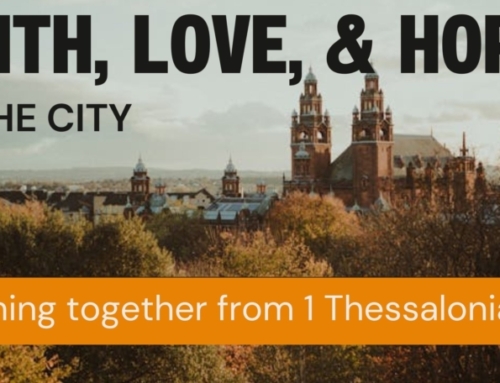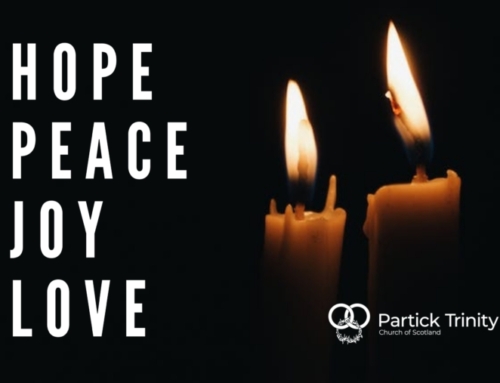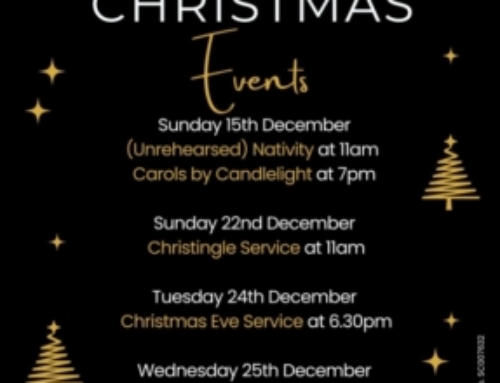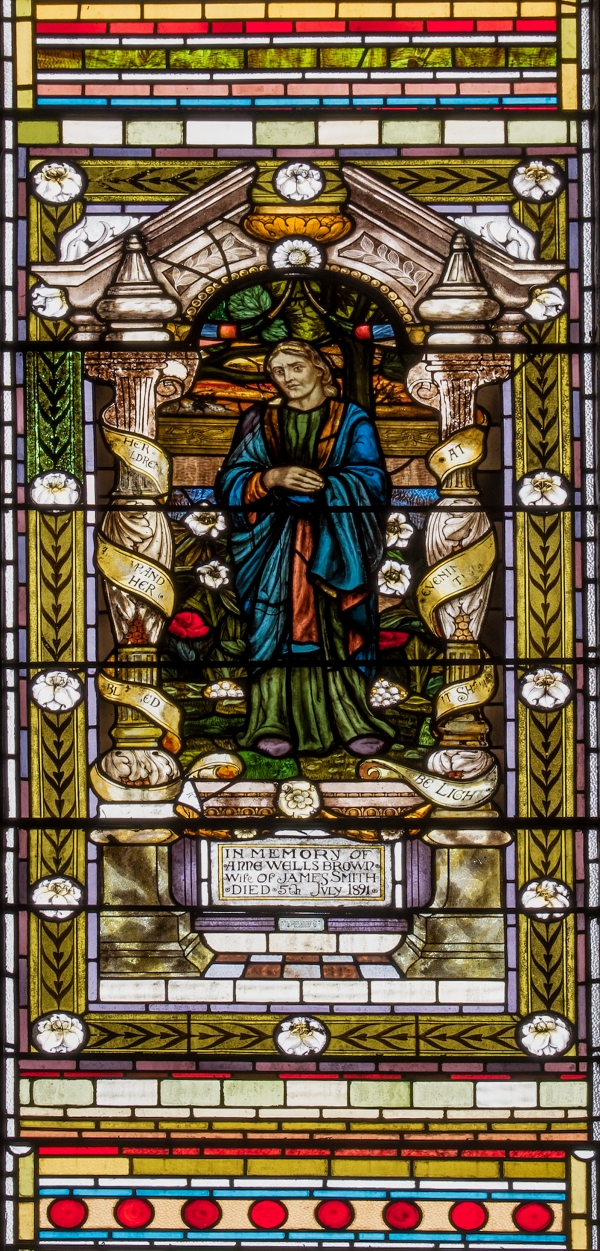
The congregation of Partick Trinity has its origins in the first congregation to be established in Partick. It was founded at a time when Partick was a village community still quite separate from Glasgow. The congregation, however, has not always been known as Partick Trinity; this was a new name adopted in 1990 following the union of the congregation of Partick East and Dowanhill Church with that of Old Partick Parish Church. Previously, in 1984, a union had been made between the congregations of Partick East and Dowanhill Churches.
Dowanhill Church (the first congregation in Partick)
In 1815, Mr William Purdie, a Baptist minister, instituted evening services in Partick where at that time there was no church of any denomination. Over the next few years, the people of Partick discovered, from services conducted by preachers from various traditions, the great comfort and convenience of having the Gospel preached in their own back yard. A public meeting was held on 30 August 1823 in Mr Walker’s schoolroom to consider the erection of a church. It was unanimously agreed that the village required a place of worship and a committee was formed to take this project forward.
Difficulty was encountered, however, because of differences between rival denominations. A further meeting was held at which the people of Partick voted, by a majority of nine, that the new congregation would be part of the United Secession Church.
On 14 October 1823, a petition for sermon was agreed to by the Secession Presbytery. Before the year was out, work had begun on the erection of a church building at the foot of Byres Road (very close to where the Kelvin Hall Underground Station now stands). This congregation became known as Partick East United Presbyterian Church.
It subsequently changed its name to Partick Dowanhill United Presbyterian Church (later Dowanhill Church) when, in 1866, the congregation moved to a new building at the top of Hyndland Street . This building was sold to The Four Acres Trust in 1984 and is now home to the Cottier Theatre [1]. It was in 1984 that the congregation united with that of Partick East and moved to worship in the Partick East building in Lawrence Street (the home of Partick Trinity today).
Partick East
The Partick East congregation was born out of lay missionary work carried out by Mr Robert M. Gibson (subsequently ordained as the first minister of the congregation) in a converted room and kitchen in the Quarry Land area of Partick. This was out reach work done by the Glasgow City Mission and the Congregation of Downhill Church.
In 1863, those in the habit of attending Mr Gibson¹s meetings agreed that it would be ‘desirable to have the ordinances of the Christian Church dispensed among them’.
A canvas of the district was undertaken and, as a result, in May 1863 a petition bearing 407 signatures was presented to the United Presbyterian Presbytery of Glasgow.
In September of that year, the congregation known as the Third U.P. Church of Partick or the U.P. Mission Church was founded. The congregation operated under the parentage of the Dowanhill congregation and first met in the Kelvin Street Mission Schoolhouse. In 1866, as the congregation grew, they purchased the building at the foot of Byres road vacated by the Dowanhill Congregation as they moved to their new building in Hyndland Street.
In 1899, the congregation, then known as Partick East United Free Church, moved to their own new building erected at the corner of Lawrence Street and Elie Street.
Old Partick
While various branches of the Church had been worshiping in their differing traditions in Partick since 1815, it was not until 1834 that moves were made to form a congregation of the established Church. Up till then, members of the ‘Auld Kirk’, as it was known, had to travel across the Clyde to Govan in order to worship in their own parish church. The district of Partick was originally part of the Parish of Govan [2].
In 1834, work began on building a Church in Church Street (opposite the Western Infirmary) and in 1836 the General Assembly of the Church of Scotland constituted this as a ‘Chapel of Ease’ [3].
In February 1869, the Parish was disjoined and the congregation of Partick Parish Church (later known as Old Partick Parish Church) was established in its own right. The congregation of Old Partick worshiped on this same site until 1990 when the union was made to form Partick Trinity Parish Church. The building erected in 1834 was extended in 1862 then in 1878-9 it was taken down and rebuilt. In 1895, a new bay and chancel were added. In 1990, the building was sold for use as a furniture warehouse. At this time the stained glass windows which were highly regarded were removed and are in storage at the People’s Palace. Sadly, the Old Partick building was badly damaged by fire in 2002 and has since been demolished.
Partick Trinity
The new congregation, born in 1990, has continued the traditions of its fore-runner congregations. Great prominence is given to Bible teaching and preaching and the congregation is continuously involved in out reach to the ever changing population of their parish. The parish served by Partick Trinity extends from the bottom of Partick Cross Street to the top of Clarence Drive and includes within its bounds the Western Infirmary, the busyness of Byres Road and the quiet tree-lined terraces of Dowanhill. A warm welcome awaits all who respond to our invitations to come in and worship with us.
[1] Daniel Cottier was the artist responsible for the original interior design of the new Dowanhill Church building. The architect of the building was William Leiper. Both were born in Glasgow.
[2] Dowanhill School still has the name of Govan Parish Public School carved in its stone work.
[3] A ‘Chapel of Ease’ was a place of worship where the affairs of the congregation were administered by another, overseeing congregation. In this case, Govan Parish Church.
Ministers of the congregations
Old Partick
Rev John Smith 1886 – 1927
Rev John A. Macrae 1928 – 1946
Rev Murdo E. MacDonald 1947 – 1949
Rev Henry C. Whitley 1950 – 1954
Rev David A. Black 1955 – 1960
Rev David M. B. A. Smith 1961 – 1965
Rev John Jolly 1966 – 1990
Dowanhill
Rev John Skinner 1826 – 1839
Rev Thomas Lawrie 1841 – 1895
Rev William Dickie 1889 – 1923
Rev William J. Baxter 1923 – 1961
Rev Henry N. Chisholm 1962 – 1967
Rev Robert Currie 1969 – 1984
Partick East
Rev Robert Gibson 1863 – 1892
Rev Robert Primrose 1890 – 1895
Rev William Macfee 1895 – 1900
Rev David Mackie 1900 – 1921
Rev Robert G. Macdonald 1921 – 1950
Rev Ian MacRury 1950 – 1963
Rev Gordon Manson 1964 – 1984
Partick East and Dowanhill
Rev Gordon Manson 1984 – 1989
Partick Trinity
Rev John Dillon 1990 – 1993
Rev Stuart Smith 1994 – 2016

History and Origins of The Partick Trinity Church Building
The present Church building at the corner of Lawrence Street and Elie Street was opened on 9th February 1899 by the congregation of the ‘East United Free Church, Partick’ who had, since 1866, worshipped in a building on a site near the present Kelvin Hall Subway Station in Dumbarton Road.
During the ministry of Rev Robert Primrose (1890-95), it became apparent that a larger building was required. The possibility of expanding the building on the Dumbarton Road site was considered but, before any firm plans could be drawn up, Robert Primrose was called to another charge and all was put on hold.
The new minister, the Rev W.G. MacFee, is the person to whom credit should be given for our present church building. It was he who undertook the responsibility of building the new church and also of raising the large sum of money it cost. What we have today we owe to his thought and direction. The memorial stone of the new building was laid on 27th November 1897 by the Rev Dr John Hutchison (Moderator of the Synod) and work was completed a little over a year later.
The building cost £8721 of which £2199 was raised by a church bazaar in October 1898 and £2175 was subscribed by members and friends of the congregation. It is interesting to note that the total debt remaining on the building in January 1901 was only £750.
The building has seen some changes over the century the installation of electric light (1925), the addition of a pipe organ (1927), the annexation of Church House (1970), the creation of the Centre Vestibule (1982), and the Re-roofing of the building (1997) have all added either to the utility or to the beauty of the building.
Writing in January 1926, the Rev R.G. MacDonald proclaimed that the new electric lighting had enhanced these beautiful Church buildings, revealing, in a way not realised before, that this church is one of the most handsome buildings in the district.
In 2003, our Kirk Session set up a Sanctuary Development Committee to look at modernising the interior of our church. This major refurbishment was completed in October 2006 and we now have an adaptable worship space, comfortable seats, access for the disabled, a hospitality area, new kitchen and new toilets.
Partick Trinity, while built by our forefathers, was ordained by God. We pray that this building will continue to be a centre of Christian worship and witness for many years to come.


